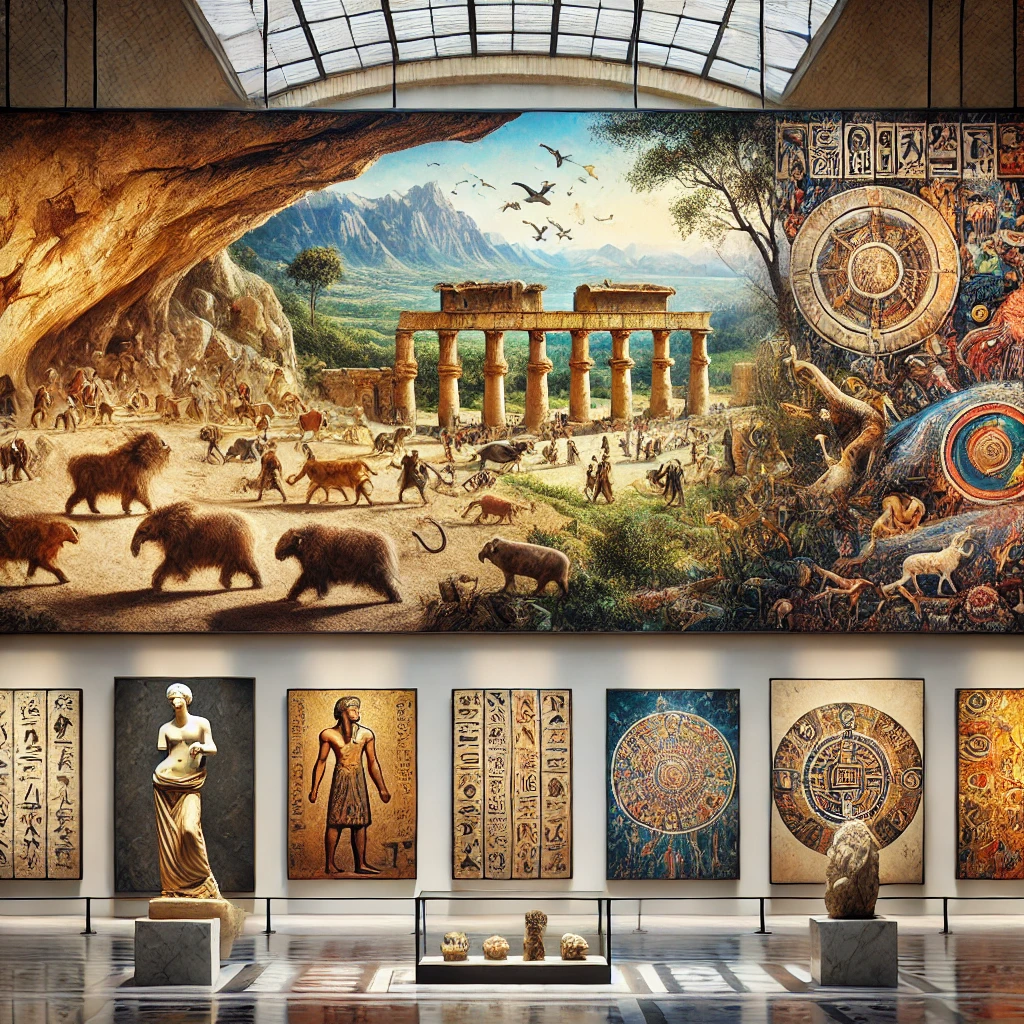Art has always been the soul of civilization capturing emotions beliefs and the essence of human experience Ancient art is more than just paintings and sculptures it is a window into the lives traditions and creativity of our ancestors From the grand pyramids of Egypt to the intricate cave paintings of Lascaux ancient art tells the story of humanity cultural evolution TributePrintedPics
What Is Ancient Art?
Ancient art refers to the creative works produced by early civilizations before the Middle Ages It includes sculptures frescoes pottery carvings and architectural marvels These artistic expressions reflected religious beliefs social structures and daily life serving as a visual legacy for future generations
The Evolution of Ancient Art Across Civilizations
Each civilization contributed unique styles and artistic achievements Lets explore some of the most influential ancient art forms
Prehistoric Art The Dawn of Creativity
The earliest known artistic expressions date back to 40000 BCE with cave paintings and carvings found in France Spain and Indonesia
The famous Lascaux Cave Paintings in France showcase vivid depictions of animals believed to have been created for spiritual or ritualistic purposes
Early humans also crafted small figurines such as the Venus of Willendorf symbolizing fertility and survival
Egyptian Art Eternal Symbols of Power
Ancient Egyptian art circa 3000 BCE 30 BCE focused on religious symbolism depicting gods pharaohs and the afterlife
The Great Pyramids of Giza the Sphinx and intricate tomb paintings in the Valley of the Kings reflect their architectural and artistic prowess
Egyptian artists followed strict artistic conventions ensuring that figures were portrayed in a way that emphasized status and divine connection
Mesopotamian Art The Birth of Civilization
Mesopotamia modern day Iraq was home to the Sumerians Akkadians Babylonians and Assyrians each leaving behind magnificent works
The Stele of Hammurabi a basalt sculpture depicts one of the earliest written legal codes
The Ishtar Gate of Babylon adorned with vibrant blue tiles and mythical creatures remains an iconic masterpiece
Greek Art The Pinnacle of Classical Beauty
Greek art circa 800 BCE 31 BCE emphasized realism balance and idealized beauty
Masterpieces like the Parthenon Venus de Milo and Disco bolus showcase Greek excellence in sculpture and architecture
Greek pottery also played a significant role in storytelling depicting mythology battles and daily life
Roman Art Grandeur and Realism
Influenced by Greek traditions Roman art circa 500 BCE 476 CE focused on realism and grand structures
Roman artists perfected portrait sculptures evident in busts of emperors and senators
Architectural wonders like the Colosseum and Pantheon highlight their engineering and artistic innovation
Asian Art Spiritual and Philosophical Expression
Ancient Chinese art featured silk paintings jade carvings and bronze sculptures
The Terracotta Army of Emperor Qin Shi Huang showcases meticulous craftsmanship and attention to detail
Indian art particularly from the Gupta period flourished with Buddhist and Hindu temple carvings including the stunning Ajanta Caves
Mesoamerican Art The Legacy of the Americas
The Maya Aztec and Inca civilizations produced incredible art including pyramids murals and intricate gold jewelry
The Mayan Codices pictorial books provide insights into their sophisticated writing and artistic techniques
The Aztec Sun Stone remains one of the most famous relics illustrating their calendar and mythology
The Purpose and Influence of Ancient Art
Ancient art was not created for mere decoration it served deep cultural religious and societal purposes
Religious and Spiritual Significance
Many artworks were devoted to gods rituals and the afterlife
Political Power and Propaganda
Rulers used grand sculptures and murals to establish authority
Historical Documentation
Art preserved history through visual storytelling and inscriptions
Innovation and Inspiration
Ancient techniques influenced later artistic movements and modern designs
Preserving Ancient Art for Future Generations
Many ancient masterpieces face threats due to time climate change and human intervention Efforts to protect and restore these works include
UNESCO World Heritage Sites
Recognizing and preserving culturally significant locations
Museum Conservation
Institutions worldwide safeguard delicate artifacts
Digital Archiving
Advanced technology allows for 3D modeling and virtual preservation of fragile artworks
Frequently Asked Questions
What is the oldest form of ancient art?
The earliest known art is the cave paintings of Chauvet France dating back over 30000 years
Why is ancient art important today?
Ancient art helps us understand history culture and human creativity influencing modern art and architecture
Where can I see ancient art?
Famous collections can be found in museums like The Louvre (France) The British Museum (UK) The Met (USA) and The Egyptian Museum (Cairo)
What materials did ancient artists use?
Common materials included stone clay bronze gold wood and natural pigments for paintings
How has ancient art influenced modern art?
From classical sculptures to architectural styles ancient art has shaped everything from Renaissance paintings to contemporary design
Conclusion
Ancient art remains a powerful testament to human creativity and resilience From intricate carvings to towering monuments these masterpieces continue to inspire and educate connecting us to the past while shaping the future of artistic expression As we preserve and celebrate these works we ensure that the stories of our ancestors live on for generations to come
